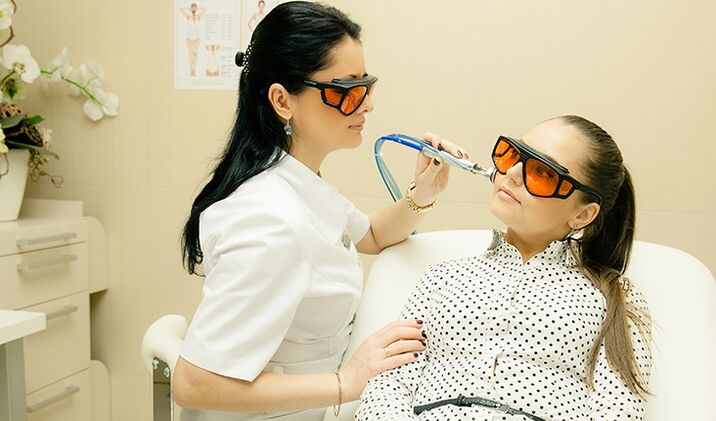
Laser rejuvenation is no longer something rare and mystical. Nowadays, everyone can turn back the years they have lived. However, not everyone has reliable information about laser rejuvenation methods, so they make mistakes in choosing the procedure.
First of all, you need to understand the type of procedure. There are two of them:
ablative;
non-ablative.
In turn, these types of impact are divided into:
solid (full);
fractional (incomplete).
Perhaps at first glance, these methods of laser rejuvenation may seem similar, but in reality they are not. Only the result is the same: after a correctly selected type of treatment, the skin becomes several years younger and looks much better.
Non-ablative laser treatment works on the deep layers of the skin and warms them. The impact of laser light energy on fibroblasts causes them to produce collagen and elastin more quickly. Microcirculation in the skin layers also improves.
This method is most effective when:
serious scars and skin damage;
extensive rash;
hyperpigmentation and uneven skin tone;
post-acne;
stretch marks.
Non-ablative treatment is based on the operation of an erbium laser. Due to the special wavelength (1550 nm), the upper layers of the skin are not affected, while the lower layers receive the stimulation necessary for recovery. As a result, most defects can be eliminated.
Ablative laser treatments work a little differently. This method uses a carbon dioxide laser with a wavelength of 10600 nm. The impact is carried out not only on the lower, but also on the upper layers of the skin. By using ablative methods, the skin texture is evened out and a lifting effect is achieved. Suitable for:
wrinkles around the eyes, small wrinkles on the face;
decrease in skin color;
pigmentation disorders.
It should be noted that the rehabilitation period after this procedure will be slightly longer, since the volume of exposed skin is greater compared to non-ablative methods.
Even though they are different, the essence of these two methods is the same. Using laser beam energy, the water in the dermis is heated and evaporated. At the same time, the synthesis of collagen and elastin necessary for rejuvenation is launched.
Fractional and continuous laser exposure

Although they provide more or less the same results, these two methods have significant differences.
With continuous laser treatment, the laser affects the skin in one large spot. However, due to the too high risk of scarring and the long recovery time, this type of laser treatment is now practically not used anywhere.
In other cases, the laser is divided into many small beams that form a grating. Thus, the laser, interacting with only 20% of the skin area, produces a 100% rejuvenating effect. This method is more modern and safe, with its use the rehabilitation time is significantly reduced.
Laser photorejuvenation
This rejuvenation technique, like non-ablative techniques, works on the deep layers of the skin. But they are not the same or interchangeable.
The best laser beams almost completely "ignore" the dermis, but have an excellent effect on the nerve endings in the skin, which signal the body to renew cells. Fine wrinkles disappear, skin tone recovers.
In laser photorejuvenation, devices such as KTP (wavelength 532 nm) and ND: Yag (wavelength 1064 nm) are used. Thanks to these parameters, laser radiation is perfectly absorbed by hemoglobin and melanin molecules, which are responsible for skin pigmentation. At the same time, water molecules practically do not heat up. For this reason, laser photorejuvenation is a very effective tool in improving skin tone and combating vascular tissue in it.
This technique does not require a long rehabilitation period and anesthesia.
Finally
Each method of laser skin rejuvenation has its own unique characteristics which greatly influence the final results. The choice of technique needs to be done carefully so that rejuvenation is not only easy and effective, but also a safe process.
Please be aware that some cosmetologists do not disclose to clients all the features of this procedure and select devices for laser treatment on the principle of "what is available". To avoid this, you should contact experienced specialists with experience who have proven themselves positively over the entire period of work.

























































